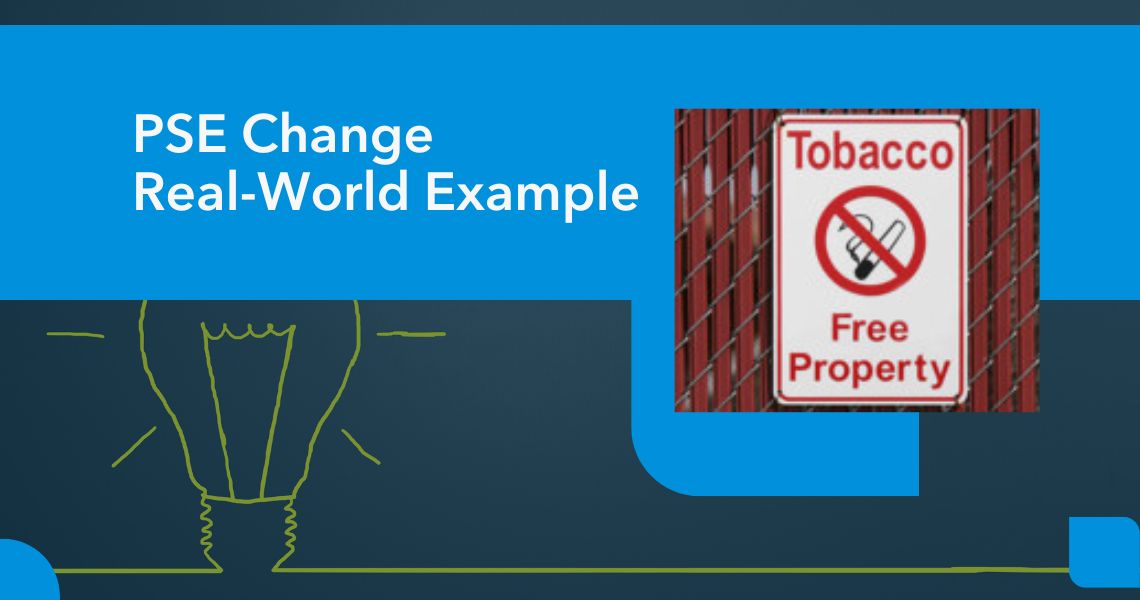Problem: The Youth Risk Behavior Surveillance System Survey and parent/community observations identified increasing rates of tobacco use among students in public schools within Cherokee Nation. The latest weighted data from the Cherokee Nation YRBSS estimated that among American Indian high school students, 20.7% had smoked at least one cigarette in the last 30 days, 14.0% smoked cigarettes every day, and 26.9% had used any type of tobacco at least once in the last 30 days.1
PSE Change Solution: The Cherokee Nation Comprehensive Cancer Control Program (CCC Program) worked with partners from the Cherokee County Community Health Coalition to better understand the problem. Based on the results of a scan of community partners and an assessment of available data, the CCC Program established a task force that communicated with school principals and superintendents. These efforts led to the establishment and implementation of a smoke-free policy regarding the use and possession of commercial tobacco products in public schools within Cherokee Nation Tribal Jurisdictional Service Area.
1. Hopkins, D., Razi, S., Leeks, K.D., Priya Kalra, G., Chattopadhyay, S.K., & Soler, R.E. (2010). Smokefree policies to reduce tobacco use: A systematic review. American Journal of Preventive Medicine, 38(2Suppl), S275-289. http://dx.doi.org/10.1016/j.amepre.2009.10.029
Resources to Support Similar Evidence-Based Initiatives
What Works for Health: Smoke-free policies for indoor areas
The Community Guide: Tobacco Use: Smoke-Free Policies
EBCCP: Smoke-free policies for indoor areas in tribal communities

